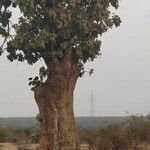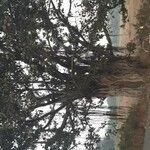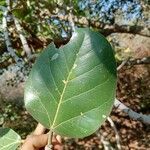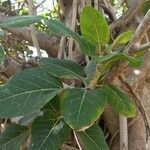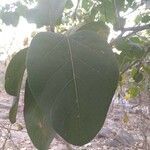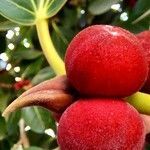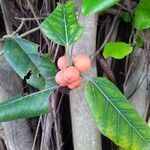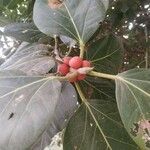| Therapeutic use
|
Diabetes mellitus (aerial part), Analgesics (bark), Anti-bacterial agents (bark), Antidepressive agents (bark), Antifungal agents (bark), Anti-inflammatory agents (bark), Anti-obesity agents (bark), Antirheumatic agents (bark), Arthritis (bark), Asthma (bark), Astringents (bark), Bites and stings (bark), Burns (bark), Central nervous system diseases (bark), Cholinergic antagonists (bark), Contraceptive agents (bark), Contusions (bark), Dental caries (bark), Diabetes mellitus (bark), Diarrhea (bark), Diuretics (bark), Dysentery (bark), Disorder of ejaculation (bark), Enuresis (bark), Erysipelas (bark), Fever (bark), Fissure in ano (bark), Fistula (bark), Fractures, bone (bark), Genital diseases, female (bark), Gonorrhea (bark), Hemoptysis (bark), Hemorrhage (bark), Hemorrhoids (bark), Hypercholesterolemia (bark), Hyperlipidemias (bark), Hypoglycemic agents (bark), Counterirritant (bark), Leukorrhea (bark), Liver diseases (bark), Low back pain (bark), Malaria (bark), Menorrhagia (bark), Nausea (bark), Nervous system diseases (bark), Pain (bark), Periodontal diseases (bark), Polyuria (bark), Psoriasis (bark), General tonic for rejuvenation (bark), Scabies (bark), Seizures (bark), Skin care (bark), Skin diseases (bark), Snake bites (bark), Sprains and strains (bark), Stress, physiological (bark), Thirst (bark), Toothache (bark), Ulcer (bark), Urinary tract infections (bark), Vaginitis (bark), Wound healing (bark), Wounds and injuries (bark), Cooling effect on body (bark), Dental caries (flower), Diabetes mellitus (flower), Dysentery (flower), General tonic for rejuvenation (flower), Syphilis (flower), Anti-infective agents (fruit), Antineoplastic agents (fruit), Aphrodisiacs (fruit), Bites and stings (fruit), Burns (fruit), Demulcents (fruit), Diabetes mellitus (fruit), Diarrhea (fruit), Dysentery (fruit), Emollients (fruit), Leprosy (fruit), Leukorrhea (fruit), Liver diseases (fruit), Nausea (fruit), Nasal disease (fruit), General tonic for rejuvenation (fruit), Syphilis (fruit), Ulcer (fruit), Vitiligo (fruit), Vomiting (fruit), Cooling effect on body (fruit), Abdominal pain (leaf), Abortifacient agents (leaf), Abscess (leaf), Allelopathy (leaf), Anthelmintics (leaf), Anti-bacterial agents (leaf), Antidepressive agents (leaf), Antifungal agents (leaf), Anti-infective agents (leaf), Ascariasis (leaf), Astringents (leaf), Burns (leaf), Central nervous system diseases (leaf), Cholinergic antagonists (leaf), Contraceptive agents (leaf), Cough (leaf), Dental caries (leaf), Diabetes mellitus (leaf), Diarrhea (leaf), Dysentery (leaf), Exanthema (leaf), Fever (leaf), Flatulence (leaf), Fractures, bone (leaf), Furunculosis (leaf), Hemorrhage (leaf), Hemorrhoids (leaf), Insecticides (leaf), Leprosy (leaf), Leukorrhea (leaf), Malaria (leaf), Menorrhagia (leaf), Muscle strength (leaf), Neoplasms (leaf), Nasal disease (leaf), Oral ulcer (leaf), Pain (leaf), General tonic for rejuvenation (leaf), Sneezing (leaf), Suppuration (leaf), Ulcer (leaf), Wounds and injuries (leaf), Diaphoretic (leaf), Fissure (plant exudate), Abscess (plant exudate), Hair loss (plant exudate), Anti-bacterial agents (plant exudate), Anticoagulants (plant exudate), Antifungal agents (plant exudate), Anti-infective agents, local (plant exudate), Antirheumatic agents (plant exudate), Arthralgia (plant exudate), Arthritis (plant exudate), Astringents (plant exudate), Bites and stings (plant exudate), Blister (plant exudate), Bronchitis (plant exudate), Burns (plant exudate), Carbuncle (plant exudate), Contusions (plant exudate), Cough (plant exudate), Dandruff (plant exudate), Dental caries (plant exudate), Diabetes mellitus (plant exudate), Diarrhea (plant exudate), Dysentery (plant exudate), Dyspepsia (plant exudate), Earache (plant exudate), Fatigue (plant exudate), Fever (plant exudate), Fibrinolysis (plant exudate), Filariasis (plant exudate), Foot ulcer (plant exudate), Furunculosis (plant exudate), Gastrointestinal diseases (plant exudate), Gingival hemorrhage (plant exudate), Gingivitis (plant exudate), Gonorrhea (plant exudate), Hemorrhage (plant exudate), Hemorrhoids (plant exudate), Impetigo (plant exudate), Inflammation (plant exudate), Jaundice (plant exudate), Low back pain (plant exudate), Lymphadenitis (plant exudate), Nausea (plant exudate), Neuralgia (plant exudate), Nasal disease (plant exudate), Pain (plant exudate), Periodontal diseases (plant exudate), Increase physical endurance, strength and stamina (plant exudate), General tonic for rejuvenation (plant exudate), Skin diseases (plant exudate), Sprains and strains (plant exudate), Stomach ulcer (plant exudate), Tooth diseases (plant exudate), Toothache (plant exudate), Ulcer (plant exudate), Warts (plant exudate), Wounds and injuries (plant exudate), Disorder of the genitourinary system (plant exudate), Vomiting (stem), Rheumatoid arthritis (plant exudate), Fissure (root), Abscess (root), Acne vulgaris (root), Hair loss (root), Anthelmintics (root), Anti-bacterial agents (root), Antiemetics (root), Antifungal agents (root), Anti-obesity agents (root), Astringents (root), Burns (root), Cathartics (root), Dandruff (root), Dental caries (root), Diabetes mellitus (root), Diarrhea (root), Diuretics (root), Dysentery (root), Dysentery, amebic (root), Disorder of ejaculation (root), Erysipelas (root), Fatigue (root), Fertility agents (root), Fissure in ano (root), Fistula (root), Fractures, bone (root), Galactogogues (root), Genital diseases, female (root), Gonorrhea (root), Hemorrhage (root), Hemorrhoids (root), Hypotension (root), Immunomodulation (root), Jaundice (root), Leprosy (root), Leukorrhea (root), Liver diseases (root), Menorrhagia (root), Metabolism (root), Muscle strength (root), Osteomalacia (root), Pain (root), General tonic for rejuvenation (root), Scorpion stings (root), Suppuration (root), Syphilis (root), Thirst (root), Ulcer (root), Urinary tract infections (root), Urination disorders (root), Vomiting (root), Wound healing (root), Wounds and injuries (root), Xerostomia (root), Sexual debility (root), Cooling effect on body (root), Fissure (seed), Antirheumatic agents (seed), Fertility agents (seed), Foot ulcer (seed), Hemorrhage (seed), Pain (seed), General tonic for rejuvenation (seed), Ulcer (seed), Wounds and injuries (seed), Cooling effect on body (seed), Muscle strength (shoot), Increase physical endurance, strength and stamina (shoot), Fissure (stem), Anti-bacterial agents (stem), Burns (stem), Dermatitis (stem), Diabetes mellitus (stem), Diarrhea (stem), Dysentery (stem), Hemorrhoids (stem), Leukorrhea (stem), Malaria (stem), Periodontal diseases (stem), Scabies (stem), Ulcer (stem), Wounds and injuries (stem), Abscess (unspecified), Alterative (unspecified), Anodyne (unspecified), Astringent (unspecified), Atrophy (unspecified), Cachexia (unspecified), Cholera (unspecified), Diabetes (unspecified), Diarrhea (unspecified), Dysentery (unspecified), Feet (unspecified), Fever (unspecified), Hemostat (unspecified), Madness (unspecified), Ophthalmia (unspecified), Rheumatism (unspecified), Rinderpest (unspecified), Scabies (unspecified), Sore (unspecified), Stomatitis (unspecified), Tonic (unspecified), Toothache (unspecified), Tumor (unspecified), Bruise (unspecified), Eye (unspecified), Lumbago (unspecified), Nausea (unspecified), Aphrodisiac (unspecified), Diuretic (unspecified), Gonorrhea (unspecified), Pain (unspecified), Wart (unspecified), Masticatory (unspecified), Liver (unspecified), Analgesics (unspecified), Antiemetics (unspecified), Anti-infective agents, local (unspecified), Anti-inflammatory agents (unspecified), Antirheumatic agents (unspecified), Arthritis (unspecified), Burns (unspecified), Contusions (unspecified), Dental caries (unspecified), Diabetes mellitus (unspecified), Emaciation (unspecified), Endophthalmitis (unspecified), Eye diseases (unspecified), Hematuria (unspecified), Hemostatics (unspecified), Leukorrhea (unspecified), Low back pain (unspecified), Mental disorders (unspecified), General tonic for rejuvenation (unspecified), Skin diseases (unspecified), Stomatitis, aphthous (unspecified), Ulcer (unspecified), Urination disorders (unspecified), Vomiting (unspecified), Wound healing (unspecified), Wounds and injuries (unspecified), Diaphoretic (unspecified), Analgesics (whole plant), Anti-inflammatory agents (whole plant), Antineoplastic agents (whole plant), Antioxidants (whole plant), Antipyretics (whole plant), Astringents (whole plant), Diabetes mellitus (whole plant), Diarrhea (whole plant), Dysentery (whole plant), Leukorrhea (whole plant), Menorrhagia (whole plant), Nervous system diseases (whole plant), General tonic for rejuvenation (whole plant)
|
